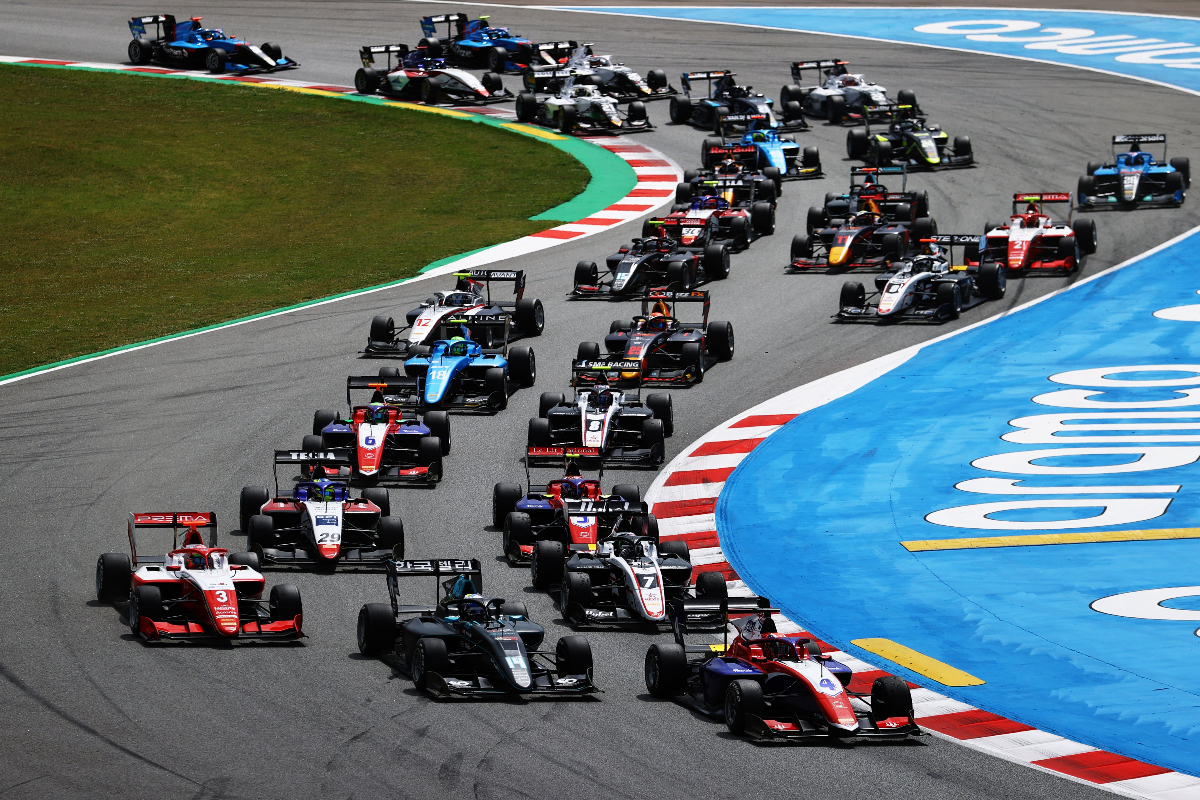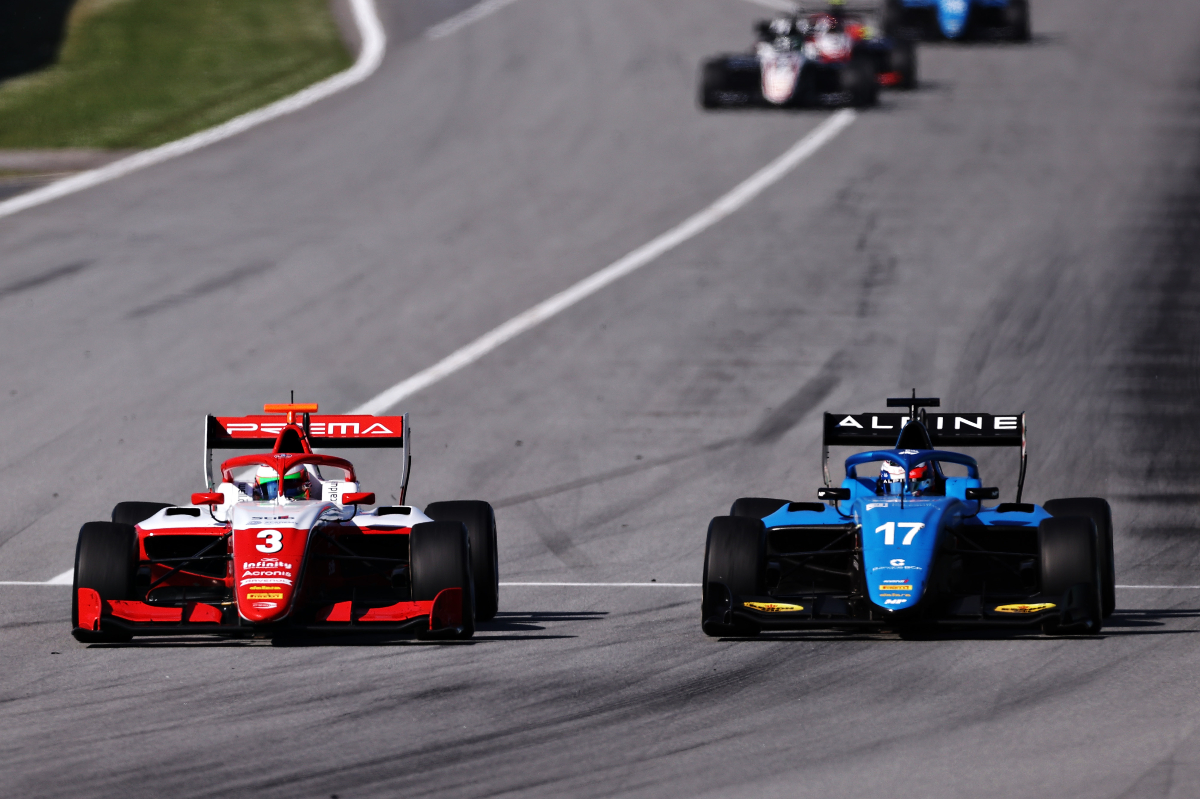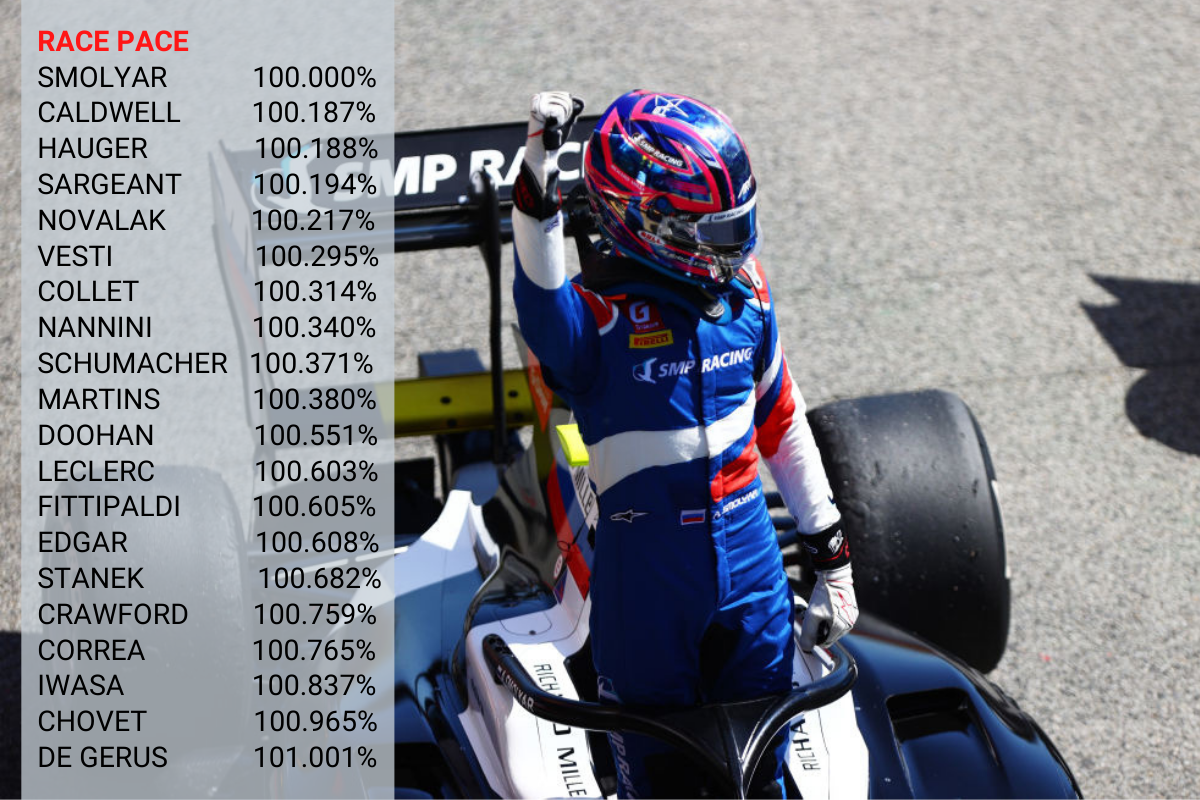
Photo: Formula Motorsport Limited
FIA Formula 3 came back with 16 rookies, a heroic returnee and a new format as some of the big talking points going into the first round at Barcelona. But several other stories emerged as the weekend progressed
There wasn’t just more racing as the FIA Formula 3 Championship returned last weekend with a new three-race format, but more media duties for drivers too and it meant that Formula Scout spent more time with the stars of the championship. All were in fine form and gave some fine answers to the questions put to them.
This increased access gave a clearer picture of the themes of the weekend. There were at least 10 things that could have made this list, making compiling it all the more of a challenge…
All the talk is consistency
If there was one word on the lips of the drivers throughout the weekend – it was consistency, or consistent. More than 20 times, in fact, was one of those two words mentioned in the press conferences. Prema’s Oscar Piastri took the title through consistency last year, just racking up what points were realistic, and largely keeping his nose clean. With the new format making it virtually impossible for anyone to dominate, drivers have made it clear that they can ill-afford mistakes.
And that’s exactly what was witnessed at Barcelona. Race one was a somewhat tame affair, with drivers well aware an error would cost them for the follow-up reversed grid encounter later that day, with a starting order set by the reverse of the top 12 race one finishing positions. But race two was far more action-packed, as Formula 2 had in Bahrain back in March debuting the same format, and there were multiple clashes between leaders. Race three on Sunday was tamer, with more points on offer and the race two incidents fresh in the mind. A mistake in that race no longer totally destroys a weekend, however.
“It’s quite different compared to what any driver is used to from earlier,” Dennis Hauger told Formula Scout after taking pole.
“Having to start P12 [in race one] is not optimal obviously, but I think overall during the race weekend I think race three is going to be the most important and we start on pole there.
 “In races one and two, it’s just about keeping the consistency and if the risk is worth the reward, it’s a different thing during the race. you just have to keep the points [in mind] and keep the stability during the season, and that is going to be even more important this year with the new format.”
“In races one and two, it’s just about keeping the consistency and if the risk is worth the reward, it’s a different thing during the race. you just have to keep the points [in mind] and keep the stability during the season, and that is going to be even more important this year with the new format.”
Rookies have some pace to find
There were a staggering 16 drivers debuting from a wide range of backgrounds, but it was the series sophomores who came to the fore. All three races were won by returnees, while only MP Motorsport duo Victor Martins and Caio Collet (who are very experienced at Barcelona from their Formula Renault Eurocup exploits) were the only rookies to take to the podium.
While Regional F3 and even Formula 4 graduates has lit up the timing sheets fairly quickly at this level, that wasn’t really seen at Barcelona. While both Martins and Collet did impress with their performances and sit a fine fourth and sixth in the standings, both were philosophical on Saturday after notching up their first podiums.
“I did quite a few mistakes,” Martins said of his race two, where he finished second. “And a big one in the beginning of the race. I still need to learn a lot with the car, with the team and in the race. Also how to manage the tyres, and the fight also. But it feels good to be on the podium, and I think it’s a good start.
“I think there are a lot of good drivers with us on the track and the consistency will be the key. And even I would say more important than the previous years. But after that, it’s just how to manage the race, the tyres and also the fight with the DRS. It’s quite difficult to stay in the zone and manage the gap with the car behind and the car in front, so I think it’s just to stay calm, like I did today after my mistake, and you can see that when you stay calm and you are consistent it’s paying off.”
Collet went further and added that he felt he could have won on debut.
“It feels really nice: first race, first podium. But I think I missed out a little bit on the chance that I had,” he said.
 “My car was really, really good the whole race, in dirty air, clean air, and I felt that I could have been P2 or even fight for the win with Alex [Smolyar] later on. But on the other side, it’s really good to start the season with a podium, so I’m really pleased.”
“My car was really, really good the whole race, in dirty air, clean air, and I felt that I could have been P2 or even fight for the win with Alex [Smolyar] later on. But on the other side, it’s really good to start the season with a podium, so I’m really pleased.”
On that missed chance, he said he should have been more aggressive in battle, with a caveat.
“It’s tricky because at the start of the race with DRS and everything, for me it’s a bit new, and I knew I had to push to stay in the DRS zone but also to save the tyres at the beginning so it was a little bit tricky, but it was nice.”
Correa’s return was a sensation
616 days after the horrendous accident at Spa-Francorchamps, Juan Manuel Correa courageously started his first race since that life-changing day. Still very much in the recovery process, Correa’s performance was certainly admirable. He narrowly missed out on 12th in qualifying, which would have been pole for his racing return (and would have been one amazing story!) but 13th was very much in the ballpark to achieve solid results. But it was slightly shy of his own target of the top 10.
Braking is an area where he continues to struggle, due to leg strength, and that is perhaps the area where FIA F3 drivers are able to find the most in laptime in DRS trains. As he continues to recover, his performances should continue to improve.
Regardless, Correa battled nicely in the first race but slipped back slightly further into the midfield at the flag. He nabbed a point in 10th as others faltered in race two, and a physically and demanding day prompted him to claim he’s “too old” but that “it’s good to be back”. He came 14th in race three, leaving him 15th in the standings, but the results are not the big story here.
It’s incredibly inspirational for him to return with ART Grand Prix. The physical, mental and emotional pain he has gone through on this journey has showcased his impeccable resilience and a level of determination up there with some of the sport’s greatest comebacks given the severity of his injuries. It’s good to have you back in a race, Juan Manuel.
 Turn 10 revision split drivers
Turn 10 revision split drivers
There was one major change to the Barcelona circuit coming into this weekend, with the tight turn 10 hairpin becoming a slightly banked, faster and more open corner. Designed perhaps more for bikes in mind, it is a somewhat halfway house between the original variant of that corner (which was a much longer curve) and the previous hairpin.
Coming into the weekend, drivers were divided on the change having sampled the new layout in pre-season testing.
Trident’s David Schumacher said on Thursday: “It’s definitely going to be harder to overtake there. Is it going to change much of the racing? I don’t know, I think that every driver goes in with a bit of aggression to overtake at every point where it’s possible, so I think the racing is going to be similar, it’s just going to be a bit harder than before.”
ART’s Frederik Vesti had a positive pre-weekend view of the alteration.“My opinion is that I think it’s a pretty good change. I think overtaking will be more difficult, but I think the corner is actually nicer to drive. It has a bit more rhythm, it’s wider as well, you can carry a bit more speed and it allows the driver to take a few different lines which I think is quite interesting.
“You can take a tighter line which saves metres, or you can go wider and carry more speed, and I think that is a cool thing to have on a track where the drivers can make a difference in their lines and I think that’s quite a positive thing.”
Schumacher’s team-mate Clement Novalak said after race one: “Turn 10 is now it’s a quicker corner, it was more stop-and-go before, at least that’s the way that I see it. Generally speaking, it’s very difficult to follow through turn nine as well, so you naturally come with quite a big gap, and the DRS zone at least for us isn’t long enough to try and make a move.”
Prema’s race two winner Olli Caldwell added: “It’s a different style of corner, personally I prefer it. It takes a little bit more out of the right-hand tyres which it didn’t used to. It would be hard to do a move there, but it’s a good corner.”
 Martins thought from observing other drivers that the reprofiling of the corner is drawing drivers into taking a different approach to turn 12 to stay close to the cars ahead in the final sector.
Martins thought from observing other drivers that the reprofiling of the corner is drawing drivers into taking a different approach to turn 12 to stay close to the cars ahead in the final sector.
Moves were made into turn 10 in the FIA F3 and FREC races, with mixed results. The overtakes that took place were slightly different than with the corner’s previous profiling. It’s tough to determine whether it actually improved the racing or not, but the drivers’ expectations seemed to be pretty much spot on.
Prema and Hauger may have a notable advantage
We have become accustomed to Prema dominance in FIA F3, and the expectation remains that the advantage may be slashed. While the changes to the format does hamper a team like Prema, the speed advantage may well still be in place.
While Hauger took pole by the narrowest of margins, it was in the race pace where his Prema team looked the most impressive. Arthur Leclerc pulled off countless overtakes on Saturday, while both Hauger and Caldwell were firmly in the mix for race two victory. Hauger comfortably won race three from pole, but his comments to Formula Scout post-race seemed to imply that he could have gone even quicker.
“I think especially in the beginning I was pushing what I could, just trying to get out of the DRS range to Nannini,” he said.
“And from then on it was trying to manage the gap. I think I was 1.5 – 1.8 seconds in front at the time and just tried to keep that space, and then it started being more of a fight and I started pushing a bit more. But most of the race was I think I had some more [speed], and every time they catched up a bit, I tried to create the gap again.
“So it was a bit of managing but it was obviously not an easy one, the tyres were on the edge, so I had to keep it without mistakes and just have a clean one.”
 After taking pole, he said of adapting to life at Prema, “In the beginning of the test with them, my confidence wasn’t fully there and there was much more potential in me as well. And also really getting along with the team I think is one of the most important things as a driver, to work together to accomplish what you want.
After taking pole, he said of adapting to life at Prema, “In the beginning of the test with them, my confidence wasn’t fully there and there was much more potential in me as well. And also really getting along with the team I think is one of the most important things as a driver, to work together to accomplish what you want.
“I feel that’s been one of the main things with the team, we’ve come really good together with them and can work to our goals basically. And I think mainly the confidence has just built up with them and I can really work with them to gain my confidence and trust in the car.
“I think it wasn’t really surprising to see us at the top this round. It felt like we had a good starting set-up and pace together from the tests, and really happy to be at the top but we just have to keep working and keep the focus.
Coming into the weekend, team principal Rene Rosin added: “Everybody expects us to be among the leading contenders and we definitely worked in that direction over the winter. We have a solid line-up featuring two second-year drivers and an up-and-coming rookie, so we are confident about our potential for the year ahead.”
It all sounds somewhat ominous…
Read all of our coverage of the FIA F3 season opener here